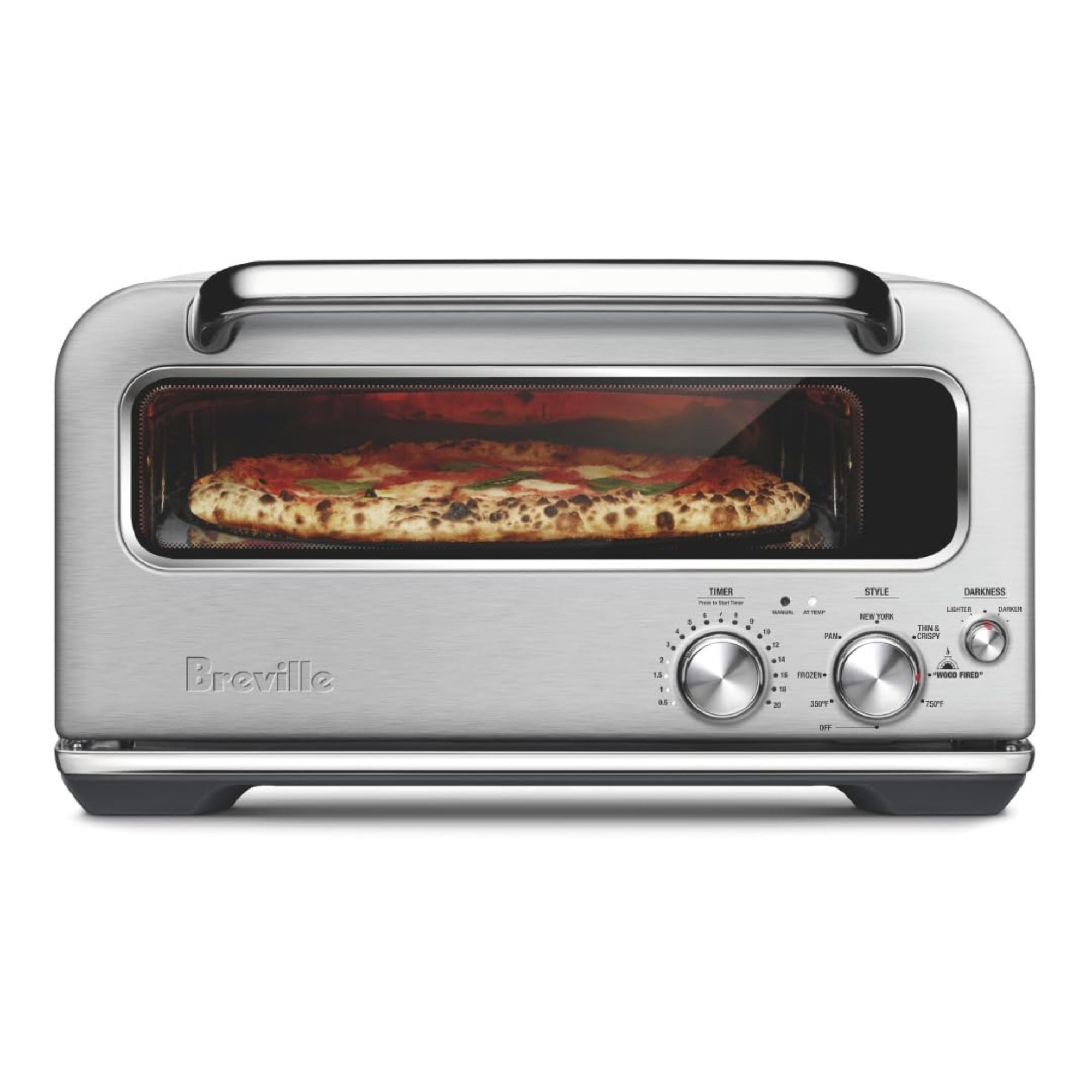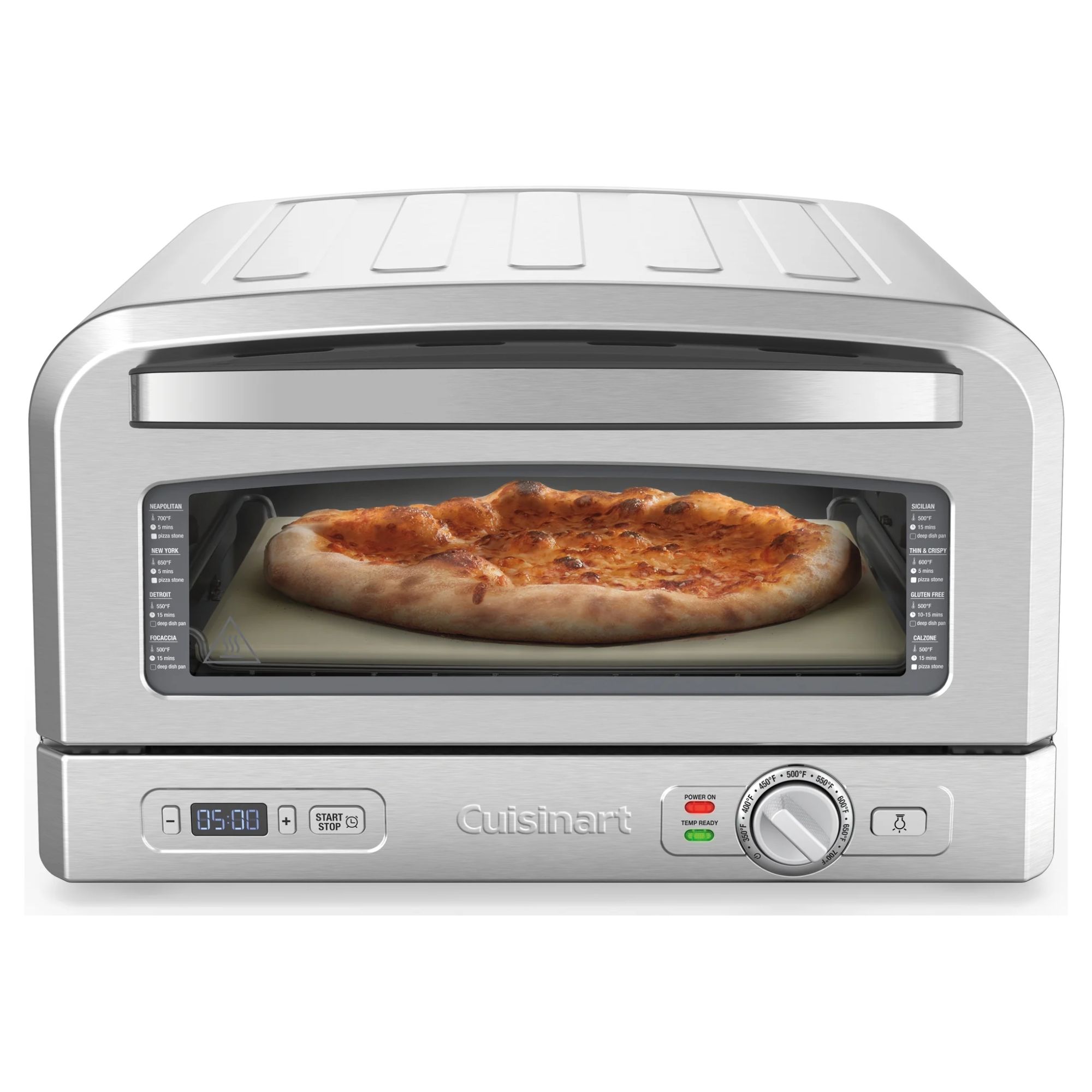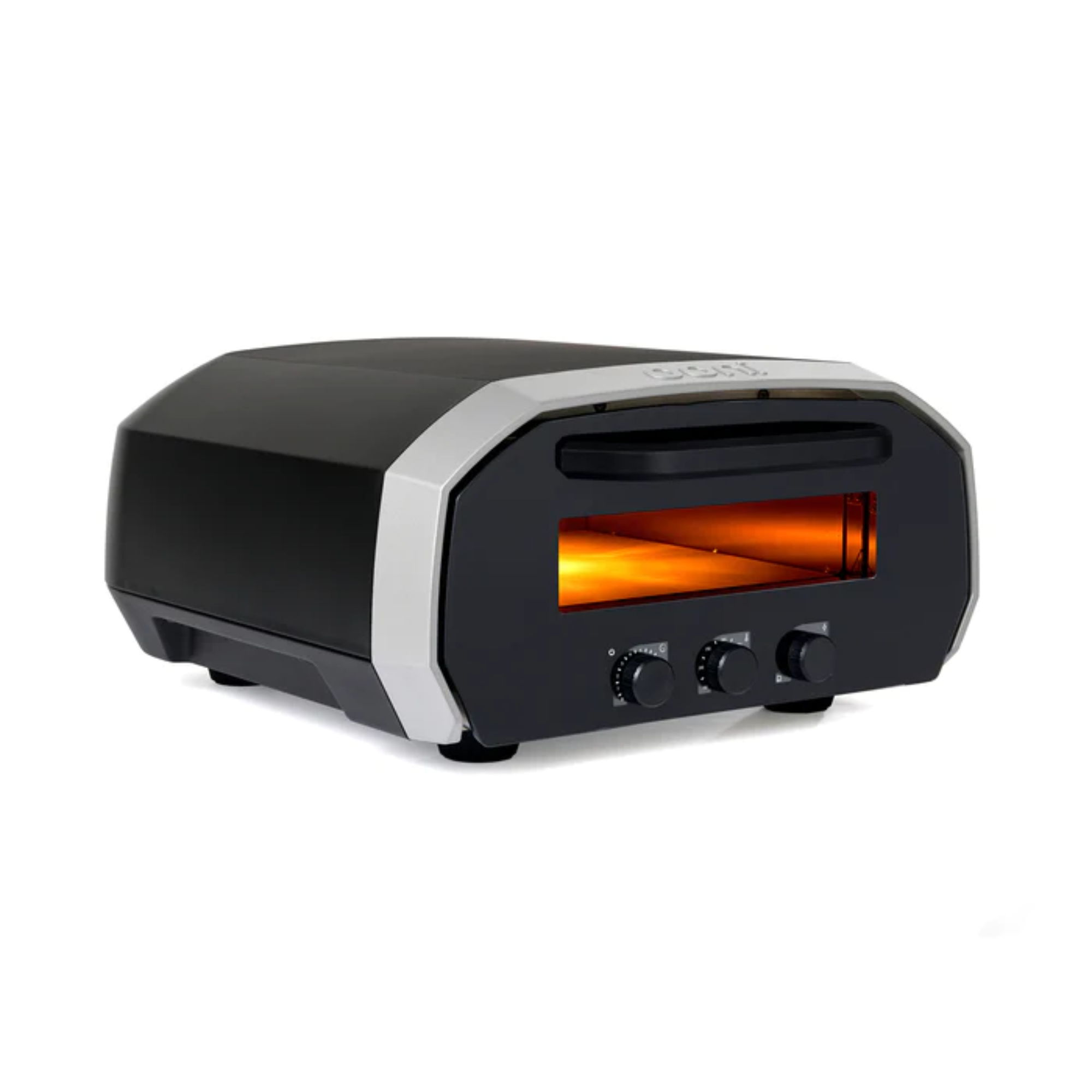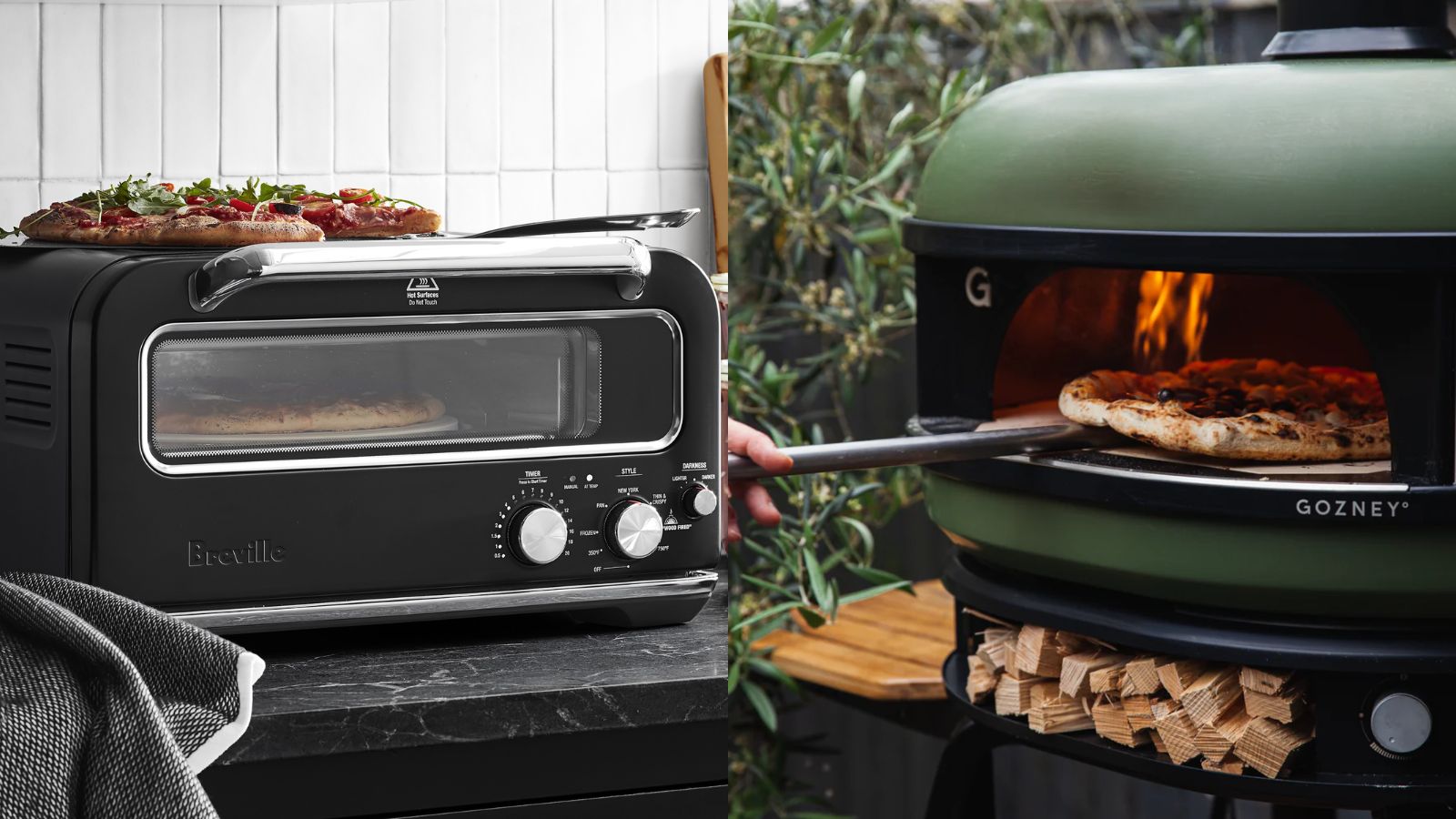
Homemade pizza is at its best when cooked in a domestic pizza oven. These clever appliances mimic a traditional pizza oven, making for fast, authentic pizza that a frozen pizza thrown in your oven can't touch.
When you're shopping for a pizza oven you'll notice that they can be divided into two categories: indoor and outdoor. As the weather gets colder, it's smart to consider if an indoor pizza oven is the right way to go. After all, an indoor pizza oven can be used all year, not just in summer, and some of them can save storage.
However, before you spend hundreds on a new oven, there are a few drawbacks that even the best indoor pizza ovens can't overcome. As a pizza oven tester, I've tried plenty of both types, so I know exactly which oven is best for each home.
Which type of oven makes the best tasting pizza?
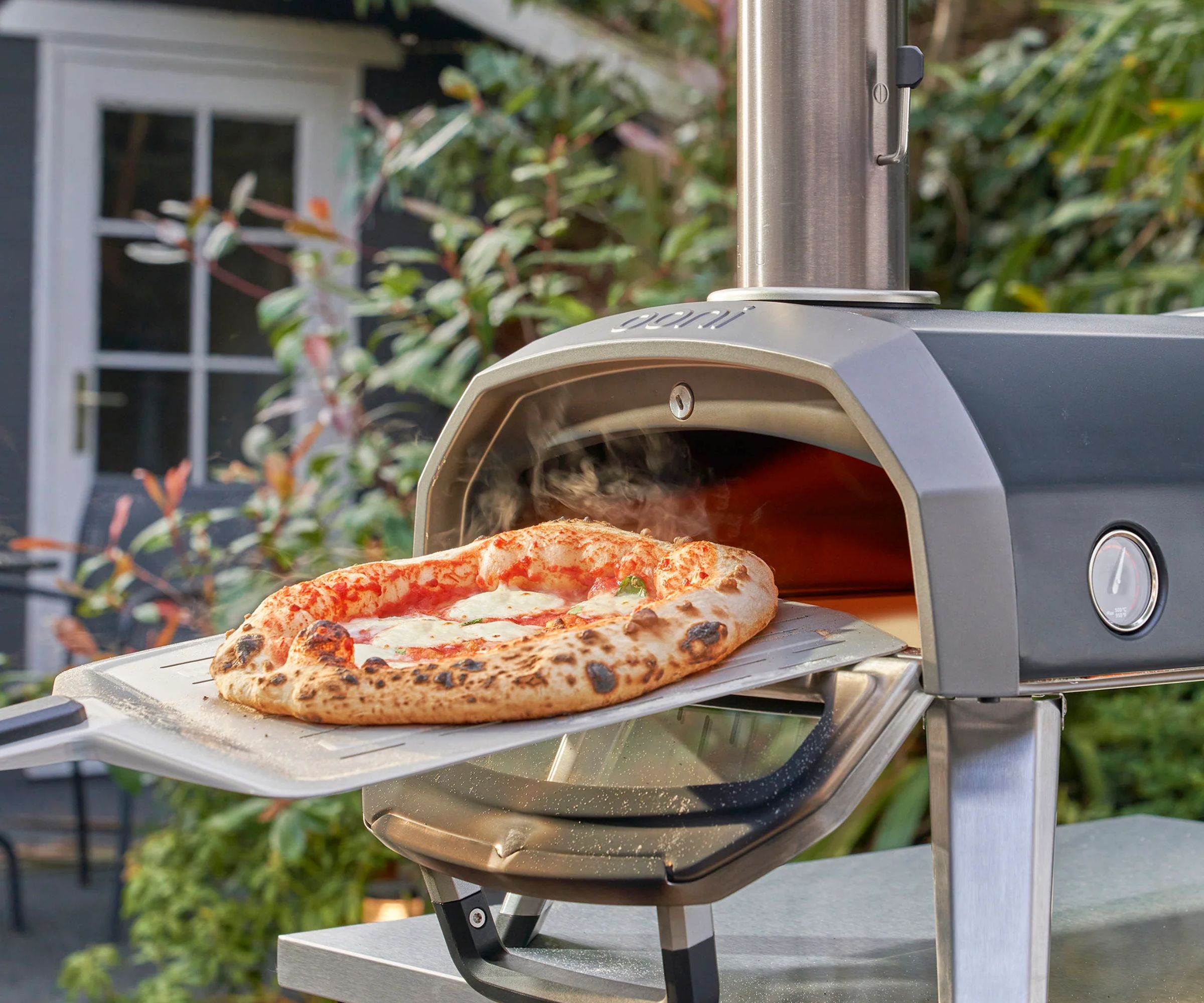
The most crucial problem is deciding which of the two makes the most delicious pizza. However, it's an easy answer.
Outdoor pizza ovens create a taste that is far superior to indoor pizza ovens. That's because the different fuel sources have a huge impact on taste. The rough rule is that wood-fired tastes best, followed by gas, distantly followed by electricity, which is the heat source in all indoor ovens.
Wood-fired ovens taste best because they impart a smoky flavor to pizzas that other fuel sources can't match. On top of that, wood ovens have flame rolling across the top of the oven to broil cheese. Altogether, this makes for perfect pizza. The best pizza ovens are all wood ovens because they're the closest thing to a traditional brick pizzeria oven.
Gas-fired ovens also have this flame rolling across the top of the oven, so they achieve similar results to wood ovens. However, they lack the smokiness of wood-fired pizzas. If you don't like the smell or taste of smoke, a gas oven could be for you, but many people find that they taste a little sterile by comparison. It's like the difference between a charcoal grill and a gas grill - there's ultimately not much difference, but the smokier option tastes slightly better.
Both gas and wood pizza ovens can reach high temperatures far above a domestic oven. Where a kitchen oven taps out at 500°F, gas or wood pizza ovens can reach 900-1100°F. This is what crisps the crust and metals the cheese, and it means that your pizza can be cooked in one or two minutes rather than ten.
Both types of outdoor oven can be augmented with a huge range of bonus features from steam injectors to keep thicker dishes like calzones from drying out, to skillets for searing meats. They offer much more versatility than electric pizza ovens.
That's because electric pizza ovens are just big toaster ovens. They cook with a huge electric filament. This doesn't have the smokiness of a wood-fired oven, nor the flame-cooking of a gas-fired oven. It makes for a similar pizza to those you'd make in a domestic oven, just with a slightly crisper base thanks to the pizza stone. If you want the very best-tasting pizza, you need a wood-fired pizza oven.
The fairest way to compare is to pit the best indoor pizza oven against the best outdoor pizza oven:
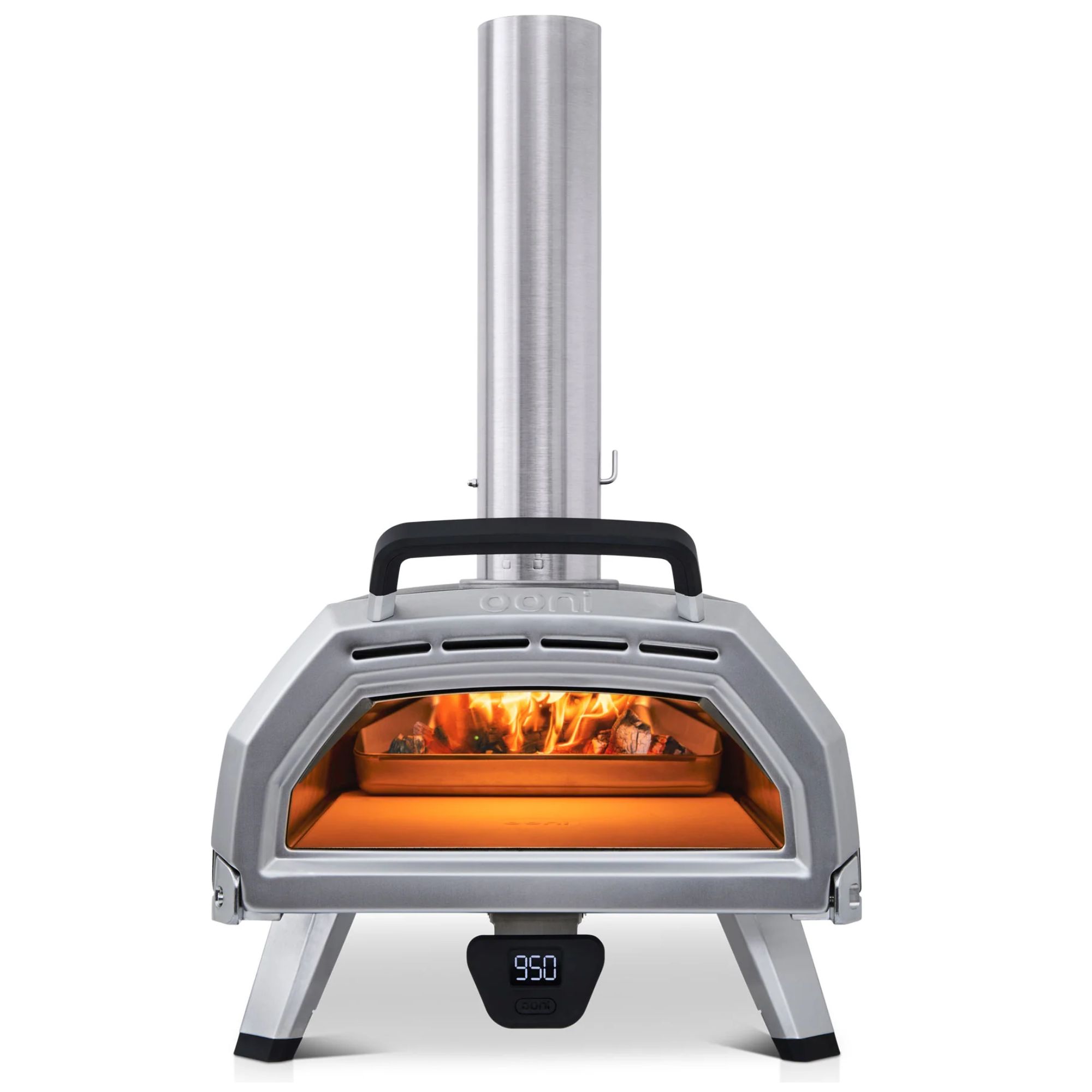
Fuel type: Wood and gas
Exterior dimensions: 33 x 32 x 20"
Cook surface: 16.7 x 16.7"
Cook time: 1 minute
Best type of pizza: Neapolitans
You can see in the table above that the Ooni Karu is a better pizza oven than the Breville Smart Oven. The Ooni cooks with more fuel types, makes larger pizzas - so you can feed more people - and makes them much faster. When we put the two to the test, we found that the Ooni Karu 16 makes much better-tasting pizzas, too.
However, there are a couple of things to recommend about the Breville oven. Its exterior is smaller, so it takes up less room, and while it's only electric it can be plugged into utility power and run straightaway, with no finicky propane hoses or wood pellets. It also has dedicated settings for different styles of pizza, making it easy to make a wide range of different pies.
Which type of oven is cheaper?
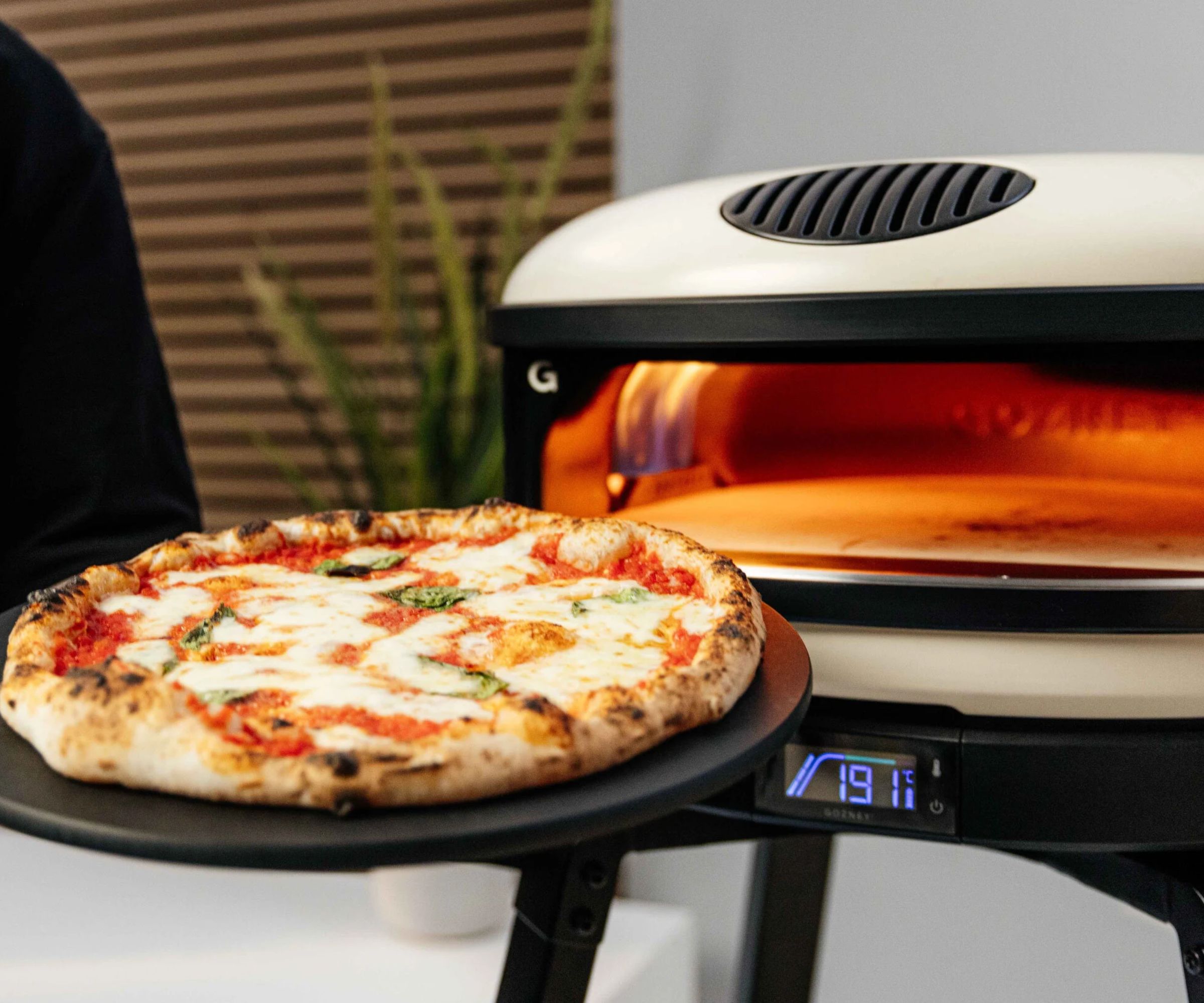
Pizza ovens are notoriously expensive, and many models cost more than $1000. However, indoor pizza ovens are more expensive. Indoor ovens like the Breville Smart Oven Pizzaiolo and Ooni Volt 12 tend to cost around $800, depending on sales events. Comparable outdoor ovens like the Gozney Arc and the Ooni Koda 16 cost $700-$600.
If you need a budget pizza oven, I strongly recommend a cheap wood pizza oven. They can taste as good as ovens more than three times the price, and crucially, much better than the equivalent indoor pizza oven. For example, we can compare the Cuisinart Indoor Pizza Oven with one of my favorite pizza ovens, the Ooni Fyra:
You can see in the comparison table above that the Cuisinart pizza oven only wins in one category, its exterior dimensions. The Ooni Fyra has a larger cooking surface, cooks almost seven times faster, and best of all, tastes much better. The Ooni has a lower MSRP too, so it's unless there's a sale, it's also cheaper. If you have any outdoor space, a cheap outdoor pizza oven - even a cheap mass-market pizza oven like this from Walmart - will be a much better budget option.
Which oven is easier to use?
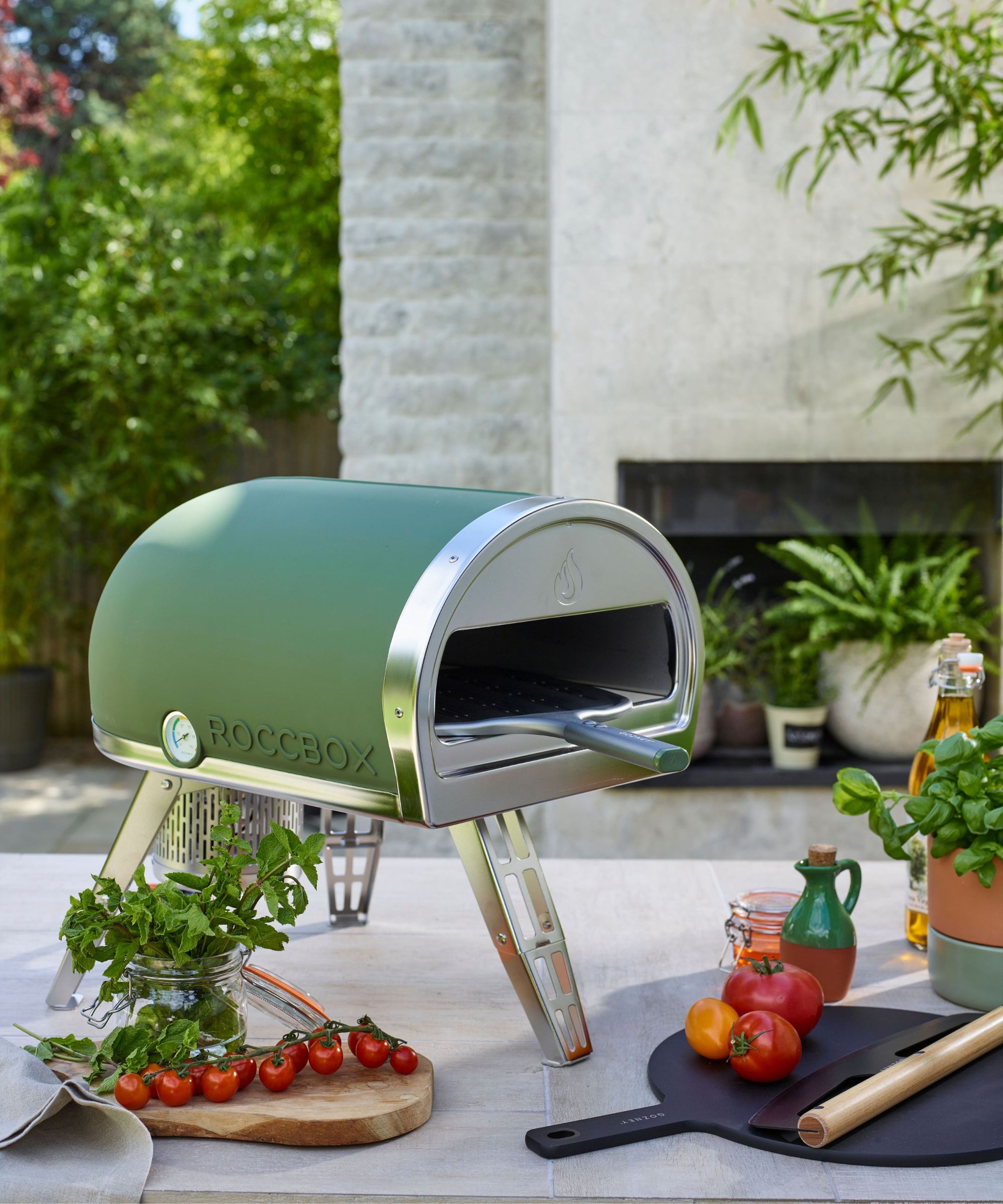
Indoor pizza ovens are much easier to use than most outdoor pizza ovens, and it's their only real benefit. They're easy to set up and use and you can cook whenever you want.
Firstly, indoor pizza ovens run on utility power, so they're very easy to set up. You don't need to worry about sourcing propane and filling up the tank, or fuss with hooking the gas tank up to the oven. You don't need to keep up a continual supply of wood pellets and learn how to light and stoke them. Just switch on the oven and you're good to go.
Indoor pizza ovens don't have as steep a learning curve as other types of pizza oven. Most indoor pizza ovens have programs for different types of pizza. This means you can set it and forget it; you don't need to monitor a temperature gun to work out the single degree Fahrenheit for your ideal New York slice. You can just launch the pizza into the oven and the temperature and timing are sorted for you.
Most importantly, you can use an indoor oven whenever you want. I've had some great times cooking in an outdoor pizza oven, but it gets harder as the weather gets colder. If you've ever used an outdoor pizza oven in winter, you'll know it can be miserable. It's harder to light the oven, it's harder to use with numb fingers, and in the winter months, you can't host. Your guests won't want to sit out in the cold while you fumble with a pizza. This isn't a problem with an indoor pizza oven, because you can use it whatever the weather.
Which is best for storage?

I think that outdoor pizza ovens are much easier to store than indoor pizza ovens. Indoor pizza ovens are often marketed as space-saving appliances, but my experience is that they take up a lot of room. In a large kitchen, that's fine, but most indoor pizza ovens take up at least a square foot. That's a lot of countertop real estate. I know from testing pizza ovens in my small apartment that an indoor pizza oven can take up half a countertop and an entire shelf in a kitchen cabinet.
Outdoor pizza ovens, however, can be stored outside under a cover, or in a garage or shed. While usually bigger, they're stored out of the way. If you keep a pizza oven in the kitchen, you'll have to navigate around it every time you open a cabinet.
Which is better looking?
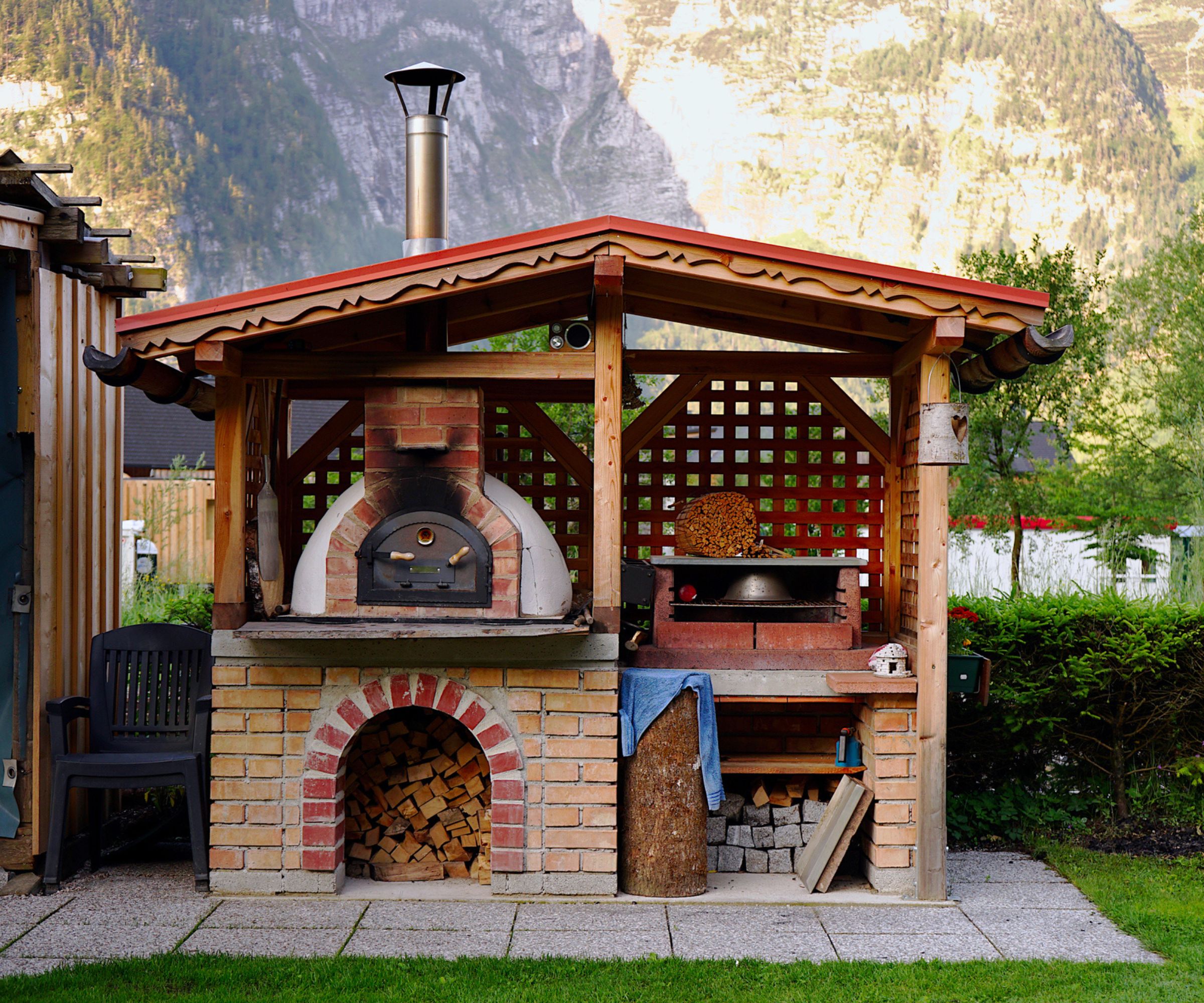
Pizza ovens are big, expensive appliances, so they'll likely be on display in your kitchen or garden year-round. That means that appearance is much more important than people like to admit.
Indoor pizza ovens tend to look worse than outdoor ovens. Outdoor ovens are designed to be the focal point of a social space, or built into an outdoor kitchen. Indoor pizza ovens are kitchen appliances, designed to look neutral and inoffensive. However, this means that they're pretty boring. Indoor ovens are either stainless steel or black, and they don't do much to elevate the look of a room.
For an example, take the Ooni Volt and the original Gozney dome below. The Ooni is a pretty good oven, but being brutally honest it's not the best-looking appliance in the world. It's a pretty dull black and silver design that looks more like a UFO than a stylish part of your kitchen design. If your kitchen is anything other than Scandi minimalism, you might find this a little too workaday for your style.
The original Gozney Dome in olive, however, is a much more stylish appliance. It's colorful without being garish and can work with a wide range of garden styles from the traditional to the modern. It would look fantastic nestled into a corner of the patio, surrounded by handy kitchen herbs like basil, rosemary, and thyme. Outdoor pizza ovens like this tend to come in many different colors, so you can tailor the oven to your style.
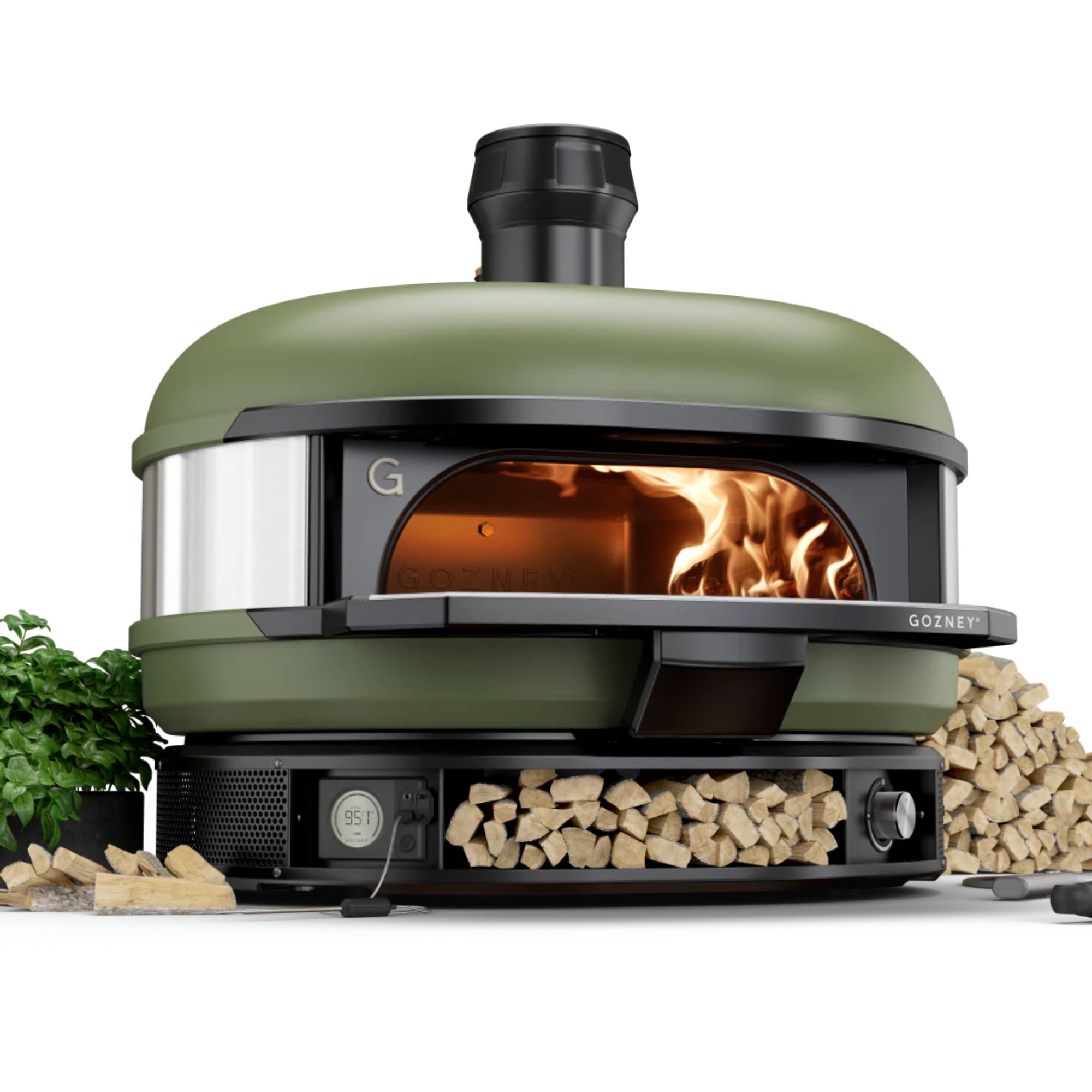
Fuel type: Wood & gas
Exterior dimensions: 26" x 24.8" x 28.8"
Cook surface: 16"
Cook time: 2 minutes
Best type of pizza: Calzone
Pizza oven FAQs
Can an outdoor pizza oven be used indoors?
An outdoor pizza oven cannot be used indoors. Both gas and wood pizza ovens create smoke which can be toxic or a fire hazard when used indoors. The only exception is the Ooni Volt 12, the only oven rated to be used both inside and outside.
With the type of pizza oven nailed down, there are plenty of other things to consider before you buy a pizza oven. It's important to consider which is the best fuel for a pizza oven, or weigh up which of the two biggest brands is best between Ooni and Gozney.
Whatever you do, make sure to measure your space before you buy. Pizza ovens are surprisingly hefty appliances and need a lot of room, so make sure it will fit.
